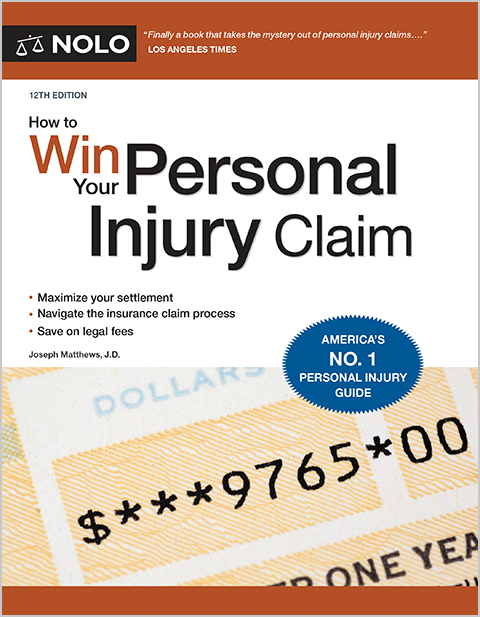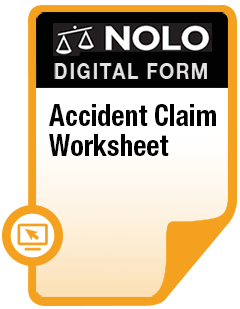Find out about asbestos-injury trust fund claims and lawsuits, the factors that go into valuing claims, and reported settlements and jury verdicts.
If you're thinking about filing an asbestos lawsuit, one of your first questions is likely to be: "How much will I get?"
Asbestos cases typically share certain similarities, but too many factors can influence a settlement—or, in the case of a trial, a jury verdict—to predict the dollar amount you might receive. Still, there are things to keep in mind when it comes to the potential value of an asbestos case.
How Do You Bring an Asbestos Injury Claim?
Generally speaking, there are three paths to an asbestos injury claim. The path you take largely depends on the circumstances of the company you're going after (called a "defendant"). For many defendants, you'll file what's called a "trust fund claim." If you were exposed to asbestos at work, you'll bring a worker's compensation claim. For all other defendants, your only option—should settlement talks fail—will be to file a lawsuit in federal or state court.
Trust Fund Claims
Companies that manufactured and sold asbestos-containing products faced huge financial liabilities when sick and dying asbestos claimants started filing lawsuits in the 1970s and 1980s. For many, the losses forced them into bankruptcy. As the bankruptcy cases played out in court, judges began requiring the bankrupt companies to create funds—called trust funds—to pay for asbestos-related injuries.
Today, the various trust funds have some $30 billion available for payouts to injured people. If you were made sick by asbestos-containing products produced or sold by one of these bankrupt companies, your path to compensation will be via a trust fund claim.
The primary advantage of a trust fund claim is that you'll probably be paid much more quickly than if you had to file a lawsuit. The disadvantage is that you're likely to end up with less of a payout. While $30 billion is a lot of money, there are still million of claimants yet to file claims and be paid. The trust funds have to make sure that there's enough to go around, and that means claimants have to settle for less.
Worker's Compensation Claims
When you're exposed to asbestos in connection with your job, an asbestos-related illness will probably be considered a covered illness under your state's worker's compensation law. As a rule, for work-related injuries and illnesses, worker's compensation is the only recourse you have against your employer.
Worker's compensation benefits tend to be on the low side, even if you're permanently and totally disabled. The good news is that—in some states—you'll get paid faster than you would in a lawsuit.
Lawsuits in Federal or State Court
If your claim is against a company that hasn't gone bankrupt, there won't be a trust fund you can pursue. Instead, if you and your lawyer can't negotiate a settlement with the defendant, the only option will be a lawsuit. Your case might settle after you've filed in court, but it's no secret that lawsuits are both time-consuming and expensive.
The upside to a lawsuit is that you might get a bigger payout. The key, of course, is making sure that the increase is enough to cover the attorney's fees and case expenses it takes to get there.
Most Asbestos Cases Settle
Most personal injury cases settle. That's true of asbestos claims too. For a trust fund claim, the claimant must prove exposure to an asbestos-containing product made by a particular company. Once that's done, the trust fund's settlement offer will usually be a predetermined amount based on the claimant's work history and the nature and severity of the disease.
For example, every plaintiff with asbestosis and five years of work as a pipefitter who can prove exposure caused by a particular bankrupt defendant will be offered the exact same amount in settlement by that defendant's trust fund. If their attorney thinks this offer is unfair, they can try to negotiate a higher payment. But there's no point in filing a lawsuit, because the company long ago went bankrupt. Chances are it no longer exists.
In a worker's compensation case, once you prove that your exposure happened at work, the compensation you'll get is based on a formula. Your payout likely will be set by statute. Whether there might be room to haggle over the amount will depend on your state law.
Lawsuits don't follow the same cookie-cutter approach as trust fund or worker's compensation claims, but very few of them actually end up going to trial. A case can settle at any point in the process, including before, during, or after trial. Both parties want to avoid the risks and uncertainties involved in putting their case in a jury's hands.
Key Factors Affecting Asbestos Case Value
Asbestos defendants, insurers, and trust fund administrators take several factors into account when negotiating a settlement with plaintiffs. Juries do the same when deliberating after a trial. These factors include:
- the length and severity of the plaintiff's exposure to asbestos and resulting asbestos-related disease
- proof that asbestos caused the plaintiff's disease
- the strength of the evidence, and
- the plaintiff's economic and noneconomic losses (called "damages").
Exposure and Disease
Generally speaking, settlement negotiations in an asbestos case will take into account the length and type of exposure, and the nature of the plaintiff's disease. If the exposure consisted of twenty years as a carpenter and four doing automobile brake repairs, the drywall and joint compound defendants will probably pay more than the brake shoe manufacturers.
A plaintiff who suffers from advanced disease that causes extreme pain and suffering is likely to collect more than one who was diagnosed in the early stage of a successfully-treated condition.
Proof of Causation
For decades, the fact that a plaintiff developed mesothelioma was considered conclusive proof of exposure to asbestos. In other words, asbestos exposure was the only known cause of mesothelioma. That's no longer true.
Today, there's a growing body of evidence showing that inherited changes in a gene called BAP1 can cause mesothelioma, even when there's no known history of asbestos exposure. Studies indicate that a significant percentage of mesothelioma cases—ranging from 20% to 36%—might be attributed to mutations in this gene.
Today, courts routinely approve requests to study the plaintiff's BAP1 gene in asbestos-mesothelioma cases. Absent proof of genetic changes, asbestos exposure remains the likely cause of the plaintiff's mesothelioma. But when test results show genetic changes consistent with the development of mesothelioma, the plaintiff's claim can fail on causation.
Strength of the Evidence
How does the strength of the evidence impact settlements? Suppose a plaintiff who worked in drywall construction for decades never paid much attention to what companies made the joint compound they used. Without clear proof of who's on the hook, the joint compound manufacturers will point fingers at each other. Odds are they'll settle for less than they would have had the plaintiff been able to identify one or more specific manufacturers under oath in a deposition.
The attitudes of defendants (or their attorneys) toward settlement can also affect the outcome. Some defendants will negotiate a reasonable settlement fairly early on, while others will fight against paying and hold out for trial. While the likelihood of actually going to trial is small, it will be harder for your attorney to estimate the value of your claims against these "holdout" defendants.
The Plaintiff's Damages
At the end of the day, the value of an asbestos case (either at settlement or at trial) is most often based on the plaintiff's economic and non-economic losses, and the defendant's share of responsibility for those losses.
What Are Economic Damages in an Asbestos Case?
Economic damages are the out-of-pocket losses resulting from a claimant's asbestos-related illness. These typically include the:
- costs of past and future medical care to treat the asbestos-related illness
- lost income and benefits because of inability to work, and
- amounts paid for replacement services, meaning someone to do work you can no longer perform yourself.
Medical Bills. If your medical expenses were mostly covered by insurance, the insurance company might put a lien on your settlement to recover what it paid for your treatment. Should this happen, your attorney will negotiate with your insurer so you can keep as much of your settlement as possible.
(Learn more about health insurance liens on personal injury claims.)
Lost Income. The value of your past and future lost income will usually be based on:
- how much you were earning at the time you began to miss work because of your illness, and
- how much longer you would have expected to work had you been healthy.
If you were already retired or disabled because of some other injury at the time you became ill, your case won't have a lost income component. However, because asbestos-related disease often shortens the sufferer's life expectancy, economic damages might include pension and other retirement income lost due to a shortened life-span.
Replacement Services. Many asbestos plaintiffs lose the ability to do things around the house, such as housework, yard care, and household repairs. If you have to hire someone to do work that you once were able to do yourself, those costs are part of your economic damages.
What Are Noneconomic Damages in an Asbestos Case?
Non-economic damages are the losses that don't come directly out-of-pocket, but that negatively impact quality of life. Common examples include:
- pain and suffering
- emotional distress
- disability and disfigurement, and
- loss of enjoyment of life.
In many cases, the biggest component of personal injury damages will be for noneconomic losses like pain and suffering. While some forms of pain and suffering are just what the term indicates—physical pain and discomfort—the concept typically captures a wide range of impacts, from the physical effects of the underlying harm to the mental and emotional consequences.
So, in the context of an asbestos case, different kinds of pain and suffering could include:
- physical pain and discomfort resulting from the plaintiff's asbestos-related health problems
- physical pain and discomfort resulting from necessary medical treatment
- anxiety, sleeplessness, fear, depression, and other psychological effects, and
- inability to perform certain tasks or engage in certain activities—from doing household chores to running a planned 10K—because of asbestos-related health problems.
Valuing Pain and Suffering. Noneconomic losses are much harder to quantify than economic damages. An itemized medical bill or pay stub speaks for itself. But people experience pain in myriad ways, especially when it comes to emotional distress. Putting a value on these damages is much more subjective than it is formulaic.
In an asbestos case, the nature of the disease generally sets a baseline for the value of pain and suffering. A plaintiff with mesothelioma or lung cancer is usually deemed to have suffered more than a plaintiff with asbestosis. But there are no hard-and-fast rules. An oxygen-dependent person with severe asbestosis might be more ill than a successfully-treated Stage I lung cancer patient.
Your attorney will make arguments about the value of your case based on your pain and suffering, not on how much a coworker's or friend's case was worth.
Reported Asbestos Case Settlements and Verdicts
We start with a word of caution. There's only one way to find out the value of your asbestos injury claim: File it, and either negotiate a settlement or take it to trial and see if you can win a verdict.
Looking at settlements and verdicts online doesn't tell you much about the value of your claim. For starters, it's difficult or impossible to verify the accuracy of the information you find on lawyer or mesothelioma websites. Keep in mind, too, that these lawyers are promoting their own services. They won't tell you about the cases that ended in a disappointing loss or a low payout.
Trust Fund Claims
Generally speaking, trust fund claims have lower values than claims brought as lawsuits. Why? Because trust funds were set up to pay the asbestos liabilities of bankrupt companies. The trusts have limited amounts of money to go around, and often pay only a percentage of claim value. On the plus side, trust fund claims tend to be paid more quickly than those associated with lawsuits.
Typical trust fund claim settlements reportedly range from $300,000 to $500,000. Your claim might be worth more or less, depending on the facts and the financial circumstances of the trust. Keep in mind, too, that you might have claims against two or more trust funds. If so, you can get more than one settlement.
Worker's Compensation Claims
Worker's compensation benefits vary widely from one state to the next, so it really isn't possible to say how much an asbestos claim might be worth. When you become disabled while still working and you need to miss work, you'll be paid periodic "temporary disability" benefits. These are meant to compensate, in part, for your lost wages.
You're also entitled to payment for your permanent disability. In cases of serious illness like mesothelioma or lung cancer, your disability is probably permanent. You'll receive a statutorily-prescribed permanent and total disability benefit as compensation.
Finally, keep in mind that your employer is responsible for reasonable and necessary medical care for all conditions related to your work-related illness.
Mesothelioma Lawsuit Settlements
Most lawsuits, including most asbestos injury or wrongful death lawsuits, end up settling without a trial. But there's a price to be paid: Settlements generally aren't worth as much as successful verdicts.
Average mesothelioma settlements are reported to range from $1 million to $1.4 million. Some sources put the number a bit higher, at $1.7 to $1.8 million. Again, you might do better or worse, depending on the strength of your claim.
Mesothelioma Lawsuit Verdicts
There are lots of risks associated with a trial, including the risk of a defense verdict—meaning the plaintiff gets nothing. For those willing to roll the dice, a winning verdict is likely to be worth more than a settlement. But don't be fooled by reports of verdicts in the tens or hundreds of millions of dollars. Those are outliers. Average verdicts are less.
Reports indicate that average mesothelioma trial verdicts often run between three and four times the average mesothelioma settlement. Values of $2 million to $5 million appear common. But keep in mind the downside: You might walk away with nothing. Before you decide to go to trial, you and your lawyer should have a serious conversation about the risks and rewards.
Lung Cancer Claims
Lung cancer can be caused by lots of things. For that reason (among others), lung cancer cases have historically been worth less than mesothelioma cases. How much less? By at least one credible law firm estimate, mesothelioma settlements are worth four to six times as much as lung cancer settlements.
Those figures might change, though, given the causation issues now appearing in asbestos-mesothelioma cases (discussed above). As always, the facts and circumstances of your case might lead to a different outcome. Your lawyer can tell you more.
Getting Help With an Asbestos-Mesothelioma Case
Asbestos cases are complex, especially when your illness is debilitating. That's true whether you have a trust fund claim or must file a lawsuit. Figuring out how much your claim might be worth isn't something you should do on your own. An asbestos-injury lawyer has the skills and experience to analyze your situation and to best position your case for success.
When you're ready to get started, here how to hire and work with an asbestos lawyer.
Talk to a Lawyer
Need a lawyer? Start here.
How it Works
- Briefly tell us about your case
- Provide your contact information
- Choose attorneys to contact you
- Briefly tell us about your case
- Provide your contact information
- Choose attorneys to contact you


